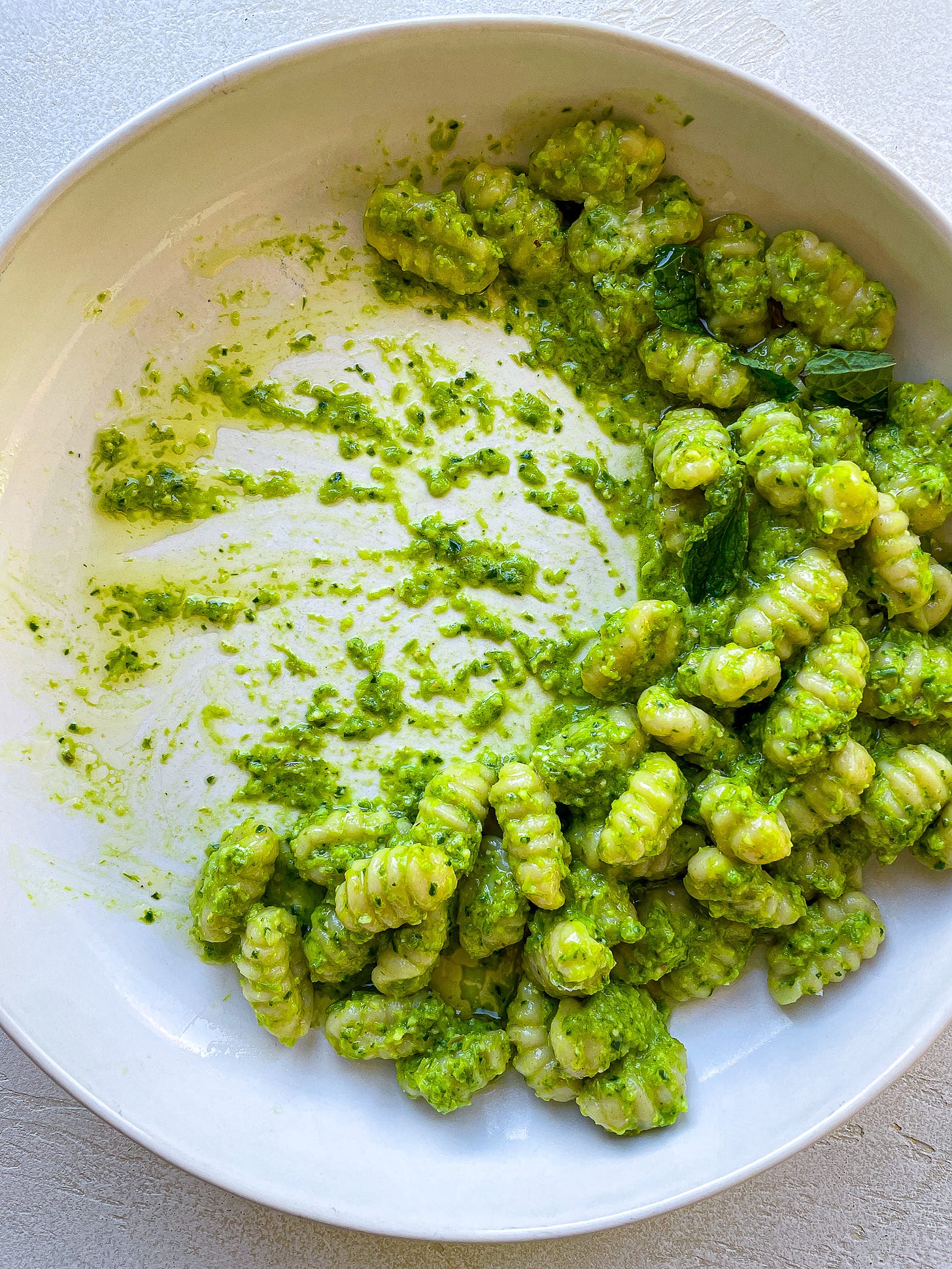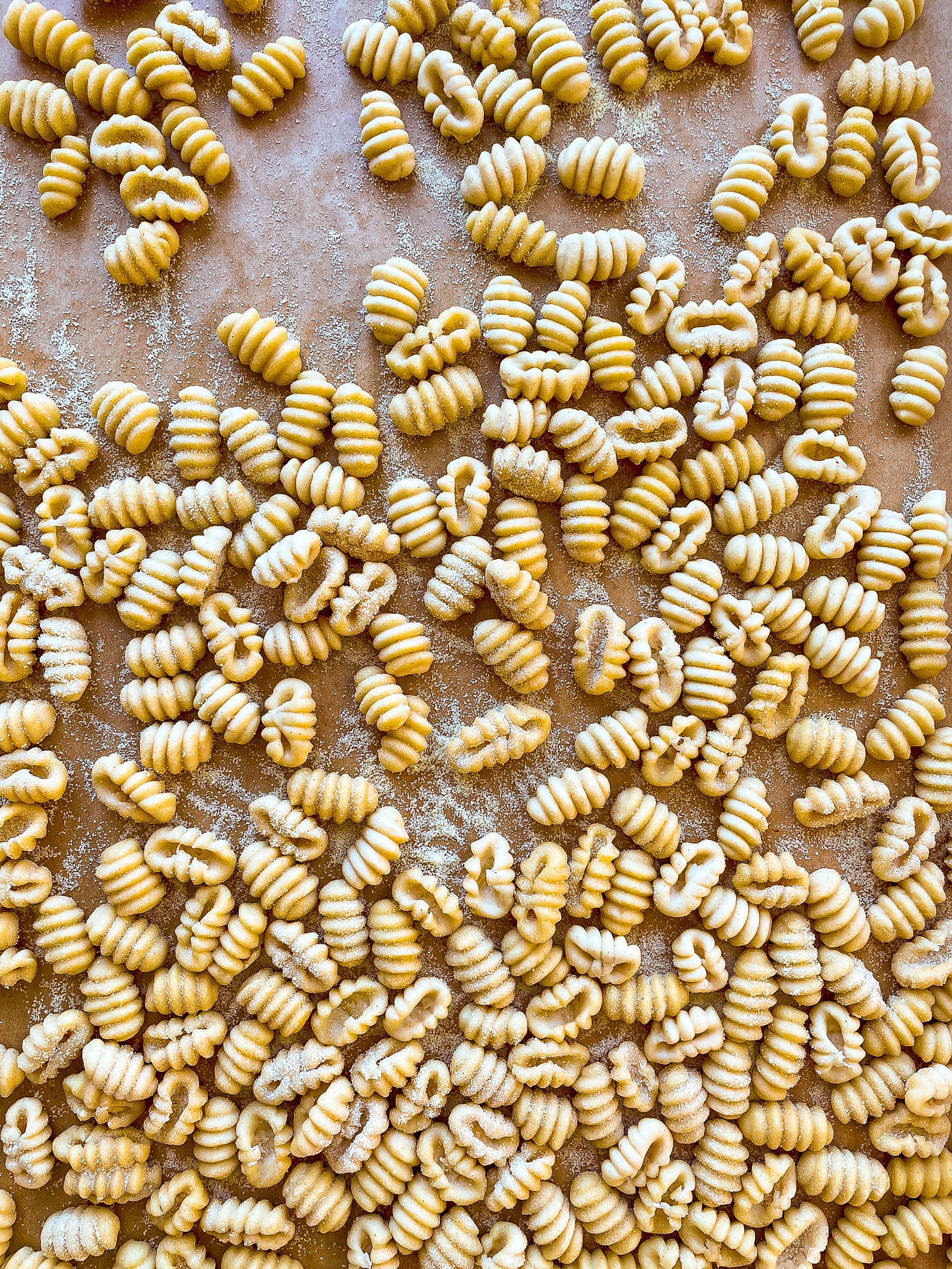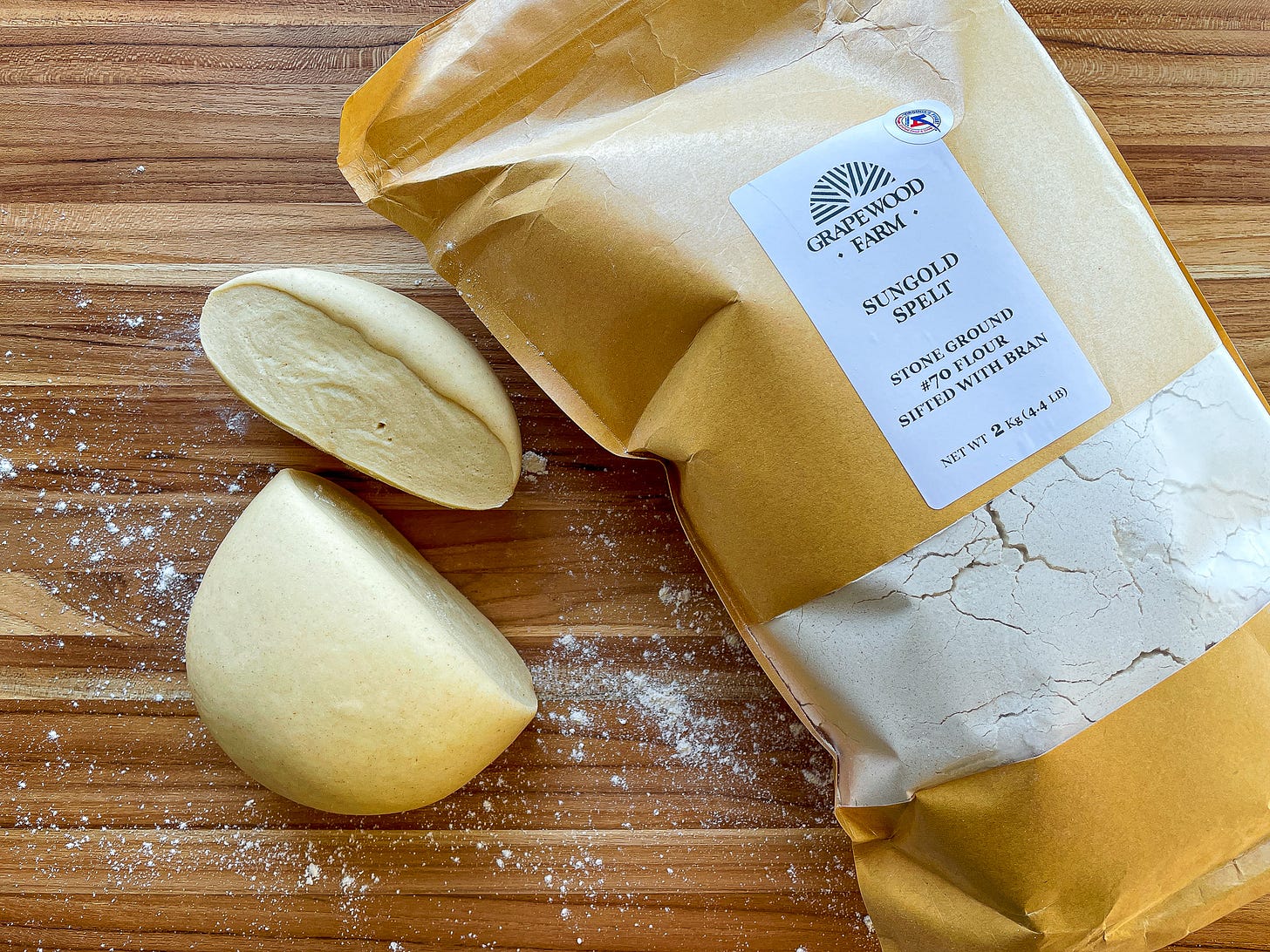I’ve moved around a lot over the last few years, and with each new place comes exciting new ingredients.
On Fridays in New York, I frequented the 97th Street farmers market, a quick walk around the corner from my apartment, to secure weekend provisions and my favorite loaf of bread (the miche from She Wolf Bakery). Years later, in Austin, I perused the aisles of Central Market, a sprawling grocery store with more varieties of chilies than I’d ever seen before. Then, last year in Birmingham, there was the Market at Pepper Place, a bustling collection of produce stands, southern baked goods, and handmade crafts.
Now that I’m back in Washington, D.C.—a quick 30-minute drive from where I grew up in Maryland—I’m more determined than ever to seek out, and cook with, what’s local. Luckily, I haven’t had to search for long. FRESHFARM, a D.C.-based nonprofit that oversees the area’s network of farmers markets (and has so kindly partnered with me on several pasta workshops—the next one’s coming up soon, details below!), has a Saturday outpost steps away from my front door. And, if I’m in the mood for a 30-minute walk north, their flagship Dupont Circle Market is the best in the city—one that, I think, even rivals New York’s Union Square Greenmarket.
During my first trip to the Dupont market last fall, among the wide variety of squashes, apples, cheeses, and breads, I found my way to a small tent offering whole grains and freshly milled flours. This was the Mid-Atlantic Grain Stand, organized by FRESHFARM in partnership with the Common Grain Alliance, an organization that connects and supports farmers, millers, bakers, and grain artisans to build an integrated and regenerative grain economy. Simply put, CGA brings together local and regional businesses that produce nutritious, flavorful grain products, and helps bring those products to home cooks like us. As someone who uses grains in nearly all of my cooking, I was thrilled to find such a cohesive resource for sourcing local grains, and I’ve been an avid customer ever since. Which brings me to the topic of today’s newsletter: whole-grain pasta.
Why whole grains?
Before we get to the pasta, let’s start with the grain. To keep it brief(ish), here are a few reasons why I love using whole and freshly milled grains in my kitchen:
Local grains = unique flavor: Many local farmers sell their products to restaurants, so they grow their grains for flavor, not just durability. Think of local grain as an outgrowth of local produce—barley, millet, and rye can be just as delicious and complex as summer strawberries and winter squash.
Whole grains = more nutrients: A whole grain encompasses the entire seed of a plant, which is comprised of three parts: the endosperm, the germ, and the bran. The germ and bran are where nutrients like iron, B vitamins, magnesium, fibers, and fats (aka flavor!) live, and these parts are often removed from commercial grain products. Sifting out the germ and bran makes flour more shelf-stable, but at the expense of all the good stuff.
Fresh = higher nutrient availability: A grain’s bran and germ are also rich in oils, which means whole-grain products are more vulnerable to spoilage. After milling, when grains are exposed to light and air, these oils start to oxidize and age—which means it’s best to use these products quickly to get the most flavor and nutritional value. Of course, it takes most of us a while to go through a bag of flour, so to keep fresh grains in peak condition longer, store them in the refrigerator or freezer.
Fresh = no stabilizers: Sourcing local and regional grains means you’re getting them directly from the farm or mill, so there are no additives or chemicals in sight.
Using whole grains in pasta
Incorporating whole grains and freshly milled flours into my pasta has been important to me for a long time. I’m also the first to admit that it’s not something I do enough. It’s easy to stick solely to the standard Italian pasta flours (I buy them in bulk), and rarely do I give myself time to experiment with grains like I once did, before this hobby became a full-time job. But it’s high time I returned to that curious mindset, and so I’m thinking about today’s recipe as a little reset.
When it comes to using whole grains in pasta, there’s one thing to remember above all else: combine whole grains with either ‘00’ (or all-purpose) flour or semola (or semolina) flour, depending on the type of pasta you’re making. Using 100% whole grains will always be tricky, even for experienced cooks and bakers—first, because while some whole grains contain gluten (spelt, emmer, rye, einkorn, barley), others are naturally gluten-free (buckwheat, teff, quinoa, corn, wild rice), and gluten is key to making stretchy, chewy pasta; second, because different grains—and brands—can yield significantly different results, both in flavor and in texture. (I don’t want to get too granular, but part of this comes down to elasticity and protein content, and whole-grain flours generally don’t have as high a protein content as 00 and semolina.)
A combination of whole grain/whole wheat and traditional wheat flours will give you the best of both worlds: a pasta with character, depth of flavor, and higher nutritional value, but also one that’s definitely still pasta. I usually opt for 25% to 50% whole grains in my pasta dough recipes—today’s being about 38%—which is based on my personal preference from a flavor and texture/workability standpoint.
Another thing to keep in mind when using whole grains is hydration. Many whole-grain, freshly milled, and gluten-free flours absorb and retain more moisture than typical white flours, which means they’ll probably need a little more liquid. For whole wheat flours, this is because the germ and bran—removed for refined white flours—can absorb more liquid than the endosperm alone. Freshly milled flours also require more moisture because, unlike most store-bought varieties, they haven’t spent months sitting on a supermarket shelf absorbing ambient humidity. And gluten-free grain flours are primarily made up of starch, which soaks up moisture readily and therefore needs more of it to become pliable.
That said, there are times when you won’t need more moisture at all—and sometimes you might even need a little less. For today’s recipe, I used Sungold Spelt Flour from Grapewood Farm, a 500-acre property located outside the town of Montross, along the waters of the Potomac river (and part of the Common Grain Alliance!). Spelt is an ancient grain similar to wheat, with a creamy yellow color and rich, nutty flavor that makes for delicious pasta. I did find that the first time I incorporated this flour into my typical semola dough recipe, I was left with a slightly sticky result—fine for cavatelli, not so fine for rugged shapes like orecchiette—so I’ve since used a little less water. Go with your gut and adjust as needed.
I’ve thrown a lot of information at you today, but ultimately my advice is this: experiment with different flours and ratios to create what you like best. There are no wrong answers, and hey—if you enjoy 100% whole wheat pasta, I support you! Just know there will be some tinkering ahead, and keep some extra water and flour nearby.
Where to find fresh & local whole grains
If you live in the Mid-Atlantic (Maryland, Virginia, D.C., Pennsylvania, West Virginia, North Carolina, Tennessee), the Common Grain Alliance has a handy tool for sourcing local grains on their website here. Some of these purveyors also ship nationally.
Two other companies milling exceptional flours (but aren’t quite as local to me) are Flourist in Vancouver, Canada, and Hayden Flour Mills in Arizona. Both ship nationally as well. The Flourist einkorn and red fife flours in particular are *chef’s kiss*.
New workshop alert!
Finally, to celebrate the Common Grain Alliance and its forthcoming Grain Stand at FRESHFARM’s Dupont Circle Market later this spring, we’re hosting a whole-grain hand-formed pasta class on Thursday, April 20 at 6:00pm ET at La Cosecha in Washington, D.C.! If you’re based in the area, join us to meet new friends and make some of my favorite equipment-free (& vegan!) pasta shapes like cavatelli and orecchiette. Vegetarian-friendly; snacks, dessert, wine, and more are included.
And now, onto the recipe…
I’ve talked a lot about the pasta, but I must impress that this roasted asparagus pesto is so simple, so fresh, and SO. GOOD. If you’re short on time or just want a light, veggie-forward meal to celebrate the start of spring, definitely whip up this sauce. It’s also great on fish or stirred into your favorite whole grains (farro would be delicious!).
Spelt Cavatelli with Roasted Asparagus Pesto
Serves 4







